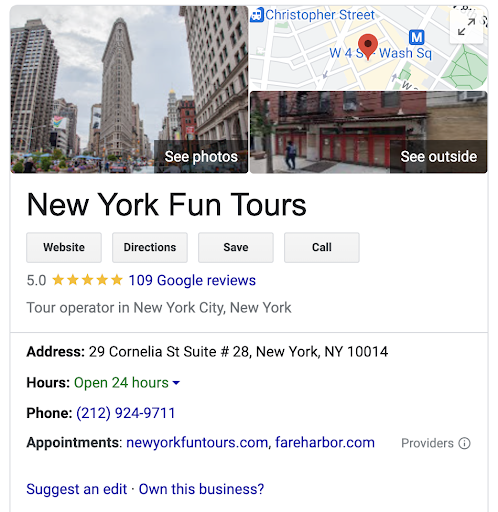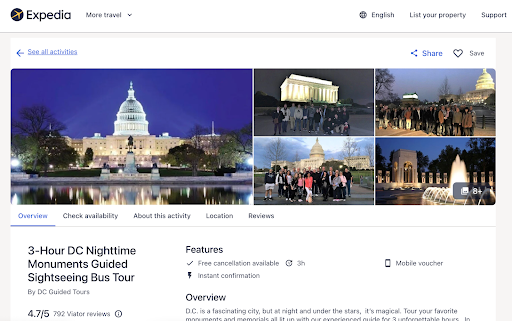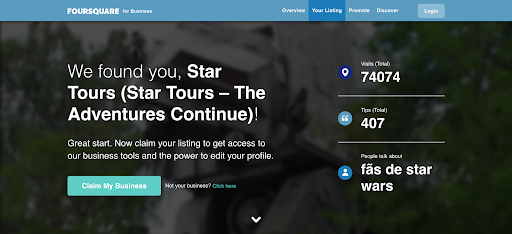
Is your tour company collecting reviews in the right places?
A single review can convince a potential customer to book with your company — that is, if they’re finding your reviews. With so many review platforms to choose from, it would be helpful to know which ones your customers are checking the most.
In this post, you’ll learn about the top seven travel review websites that every tour operator should know about.
1. Google My Business

Google is the number one website for online reviews. About 64% of consumers say they are likely to check reviews on Google before visiting a business, which is more than any other review site. Google hosts 73% of all online reviews for businesses, according to an analysis by ReviewTrackers.
You can find your business on Google by typing the name into the search bar on this page. If the business doesn’t exist on Google yet, you’ll be prompted to start building a business profile.
Make sure to claim your business profile so that you can control how your business appears in Google searches as well as manage customer reviews. Now, when guests leave you a Google review, you’ll be able to publicly reply as your business. Businesses that respond to Google reviews are seen as 1.7X more trustworthy than businesses that don’t.
2. Facebook
Facebook is the biggest social media site in the world and the second-biggest review site after Google.
The first step is to create a Facebook page for your business. Then, your customers will be able to “Like” your business, leave you a review, and “recommend” your business to others. When customers go to review your business, Facebook will ask them if they “recommend” it to others, as the example shows above.
Reach out to satisfied customers via email, phone, or in person and ask them to leave a review on your Facebook page. Make it easy for your customers to find your Facebook page by making it the same name as your company, as well as linking to it from your website and emails.
3. TripAdvisor
Tripadvisor is the leading review platform for the tourism industry specifically, boasting 1 billion reviews and opinions from travelers around the world. Travelers tend to leave long-form, in-depth reviews on the platform — 3x longer than other leading online travel agent websites and search engines.
A recent Tripadvisor study found that 68% of people are more likely to book after reading a long review. Meanwhile, three out of four respondents said online reviews were “extremely or very important” when making travel decisions, including for accommodations (82%), attractions (77%), and restaurants (70%).
Even if you’ve never created a Tripadvisor page for your business, there’s a good chance your company already has one. If a customer previously reviewed your business on Tripadvisor, the platform would have automatically created a listing for your business.
To check if you already have a listing, you can search for your company name through this link: https://www.tripadvisor.com/Owners. If your business name shows up, click on it, and start the process of claiming your free listing.
The fastest and simplest way to increase your reviews on TripAdvisor is to remind your guests that your company is open for feedback. Politely ask your guests to review their experience they’re leaving, and follow up with an email linking to your Tripadvisor page.
4. Expedia

Expedia is mostly known as a booking engine for hotels and flights, but it also sells tours and activities. When you list your tours and activities on Expedia, they’ll be marketed across Expedia’s portfolio of over 60 travel booking sites like Travelocity and Trivago. The Expedia website alone attracts 47.6 million unique monthly visitors.
Listing your tour company on Expedia can be a great way to drive more bookings, as long as your company can rank high enough in search results for customers to find it. Tours and activities are ranked based on price, location, distance from accommodation options, and traveler reviews.
Positive reviews help prove to Expedia that guests are enjoying your tours, and therefore, your brand should be ranked higher than your competitors.
5. Foursquare

Foursquare has over 100 million users in the U.S. The app provides personalized recommendations of places to go near the user’s current location, making it a viable review platform for attractions.
Customers can “check-in” every time they visit a local business or attraction and share it with other users on the app. To get more reviews on Foursquare, operators should encourage their customers to check in when they arrive. Then, politely remind them to leave a review at the end of their visit.
6. Airbnb Experiences

An Airbnb experience is an in-person activity hosted by a local expert, such as a chef hosting a cooking class. As of 2020, there were more than 40,000 experiences in more than 1,000 cities.
Reviews are critical to converting customers on Airbnb. Similarly to booking a short-term stay on Airbnb, guests want to know how others feel about an experience before committing to it.
Only guests who have booked and paid for an Airbnb experience can leave a review. Once an experience has ended, guests have 30 days to leave. Operators can then post a public response within 30 days after the review was submitted.
7. Yelp

Yelp helps travelers find and review local businesses in their area. It’s a platform that caters to a more local crowd, such as a couple doing a staycation in their own town.
Yelp has 184 million reviews worldwide and reaches 178 million users monthly across mobile, desktop, and app platforms. In fact, 45% of customers are likely to check Yelp reviews before visiting a business. Another study found that 87% of consumers read online reviews for local businesses in 2020, up from 81% in the previous year.
Businesses are technically not supposed to ask their guests for a Yelp review. The idea is that posted reviews are unsolicited and represent customers’ genuine and unbiased opinions. Instead, make sure your business page is updated and place a Yelp badge on your website.
That way, your customers will know your business is on the platform. They’ll likely want to read your reviews before booking, as well as leave their own after the experience. You can also try sharing your best Yelp reviews on social media as a way to let customers know your Yelp page is open for feedback.
Best practices for collecting more user reviews on travel websites
Here are some actionable tips to get more detailed reviews on all of the travel sites that we shared above.
- Train your staff to ask every customer they talk with to leave a review. This should become a habit.
- Encourage staff to make review requests personal, as guests are more likely to respond when they feel they are helping an individual rather than a business.
- Implement a system to reward staff when their name is mentioned in a five-star review, which will motivate them to encourage guests to leave reviews.
- Use features, like Xola’s automated TripAdvisor Review Express, to automagically remind guests to leave a review. This automates the process, which can lead to a significant increase in the number of reviews.
- Capture the email addresses of all guests in a group, not just the person who booked, by requiring digital waivers at check-in. This is easy to do if you use Xola Waivers.
- 7. Proactively address any negative feedback before it turns into a public review, as a simple apology or offer to make things right can prevent negative reviews.
- 8. Use negative reviews as an opportunity to demonstrate excellent customer service, responding with humility and taking responsibility to turn a negative review into a positive impression.
***
There are several travel review sites your customers check before booking. It’s up to you to find out which sites are the most relevant for your audience — and focus on growing your reviews on the right platforms.





